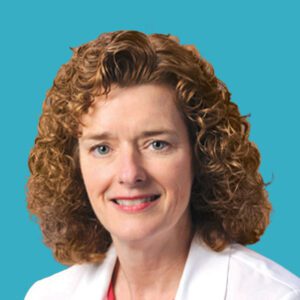What You Should Know
Birth defects – also referred to as congenital anomalies – can vary widely in type and severity.
Though the exact cause of a birth defect is frequently unknown, a range of treatment and care options are often available.


What is a birth defect?
“Birth defect” is an umbrella term for various health conditions or physical abnormalities that are present when a baby is born – some of which can be detected prior to birth. Birth defects occur in approximately 3-4% of babies born. They can range from mild to severe, and while some are life-threatening, many can be treated or ameliorated.
Some birth defects occur more often than others. “Among the most common are birth defect syndromes such as Down syndrome,” explains Dr. Cathy A. Stevens, the director of medical genetics at the Children’s Hospital at Erlanger. “Additionally, cleft lip/palate, congenital heart defects, spina bifida, eye defects, and gastrointestinal anomalies are also common.”
What causes birth defects?
Determining the exact cause of a birth defect can be challenging and, in some cases, impossible; however, this is dependent upon the type of birth defect the child is born with. Medical experts agree that the primary causes of birth defects are genetic factors, environmental factors, or a combination of the two.
Pregnancy that occurs in women over the age of 35 can elevate the risk of genetic birth defects, as can a family history of birth defects. The most well-known genetic birth defect syndrome is Down syndrome, a chromosomal defect that results from a child being born with an extra chromosome. Another common syndrome is achondroplasia, which is a type of dwarfism caused by a mutation in the FRFG3 gene. This gene mutation can be inherited from a parent with achondroplasia or the mutation can occur spontaneously in the child. Sometimes a genetic disorder occurs because both parents are carriers of a mutation which does affect them but can affect the child if he/she inherits a mutation from both parents. Common examples of this are cystic fibrosis and sickle cell anemia.
Another cause of birth defects is environmental factors. If the mother has a certain condition, such as insulin-dependent diabetes or lupus, the pregnancy may be at an increased risk of birth defects. Infections during pregnancy can also elevate risk, as can certain prescription medications such as isotretinoin, which is prescribed to treat severe acne. Exposure to tobacco, alcohol, or drugs is also known to heighten risk of birth defects – especially in the first eight weeks of pregnancy. In fact, most birth defects develop during the first three months of a pregnancy while the organs are forming in the womb.



How are birth defects identified?
Birth defects can be detected and diagnosed prior to birth or after it; however, the time of diagnosis depends on the type of birth defect. Screening tests are regularly performed as part of prenatal care. Abnormal results may lead to additional testing to try to identify the problem. Prenatal ultrasounds may identify a structural abnormality such as a heart defect in the developing fetus. Blood tests on the mother may detect some defects including spina bifida. Newer testing known as Noninvasive Prenatal Testing (NIPT) screens for several chromosomal disorders. This test analyzes small fragments of DNA that are circulating in the pregnant woman’s blood.
Abnormal test results may prompt further diagnostic tests, which, depending on the stage of pregnancy, might include a high-resolution ultrasound, fetal MRI, chorionic villus sampling (CVS) in which the doctor tests a tiny piece of placenta for diagnostic studies, or an amniocentesis, in which the doctor collects a sample of amniotic fluid for chromosomal or other genetic testing. However, some birth defects may not be detected until birth or even some time after birth.
What are some of the most common birth defects?
Cleft Lip/Palate. These defects develop within the first three months of pregnancy. A cleft lip results from the two sides of a baby’s upper lip not fusing together properly, and a cleft palate occurs when the hard and/or soft palate (parts of the roof of the mouth) do not fully develop. These abnormalities can make feeding and speech difficult for the child and can cause ear infections and abnormal dental development.
Congenital Heart Defects. There is a wide range of congenital heart defects, and treatment varies by type. One of the more common ones include an atrial septal defect, which is a hole in the heart wall that separates the upper left and right chambers of the heart. Ventricular septal defect is a hole between the lower left and right heart chambers. Coarctation of the aorta is a narrowing of the aorta, which restricts blood flow and can weaken the left ventricle of the heart. Some children may have a combination of these abnormalities, and medication and surgical correction are often required. However, congenital heart defects are not always severe. “Many are mild and resolve on their own,” says Dr. Stevens.
Spina Bifida. The most common neural tube defect, spina bifida, is when the spinal cord is exposed externally. This often results in weakness in the legs and lack of control over bladder and bowel function. As for treatment, according to Dr. Stevens, “Typically, the lesion is closed surgically by a neurosurgeon soon after birth to prevent infection and potential trauma to the spinal cord. The baby may also require a shunt for treatment of hydrocephalus, which is fluid build-up in the brain.”



What should parents do when they learn that their child has been diagnosed with a birth defect?
“If the anomaly has been identified prior to birth, it is helpful to spend some time reading about the condition and its treatment,” advises Dr. Stevens. “It may also be helpful to meet with a surgeon or other specialist to learn about the plan for treatment and the expected outcome.”
Once the child is born, it’s important to remain in regular communication with any specialists the baby might need for treatment or continuing care. The more informed a parent is about their child’s condition, the more equipped they’ll be to contend with it. However, it’s important for parents to know that they don’t have to go through everything alone.
“Assistance by other family members can be extremely valuable, since parents may feel overwhelmed,” says Dr. Stevens. “Furthermore, parent support groups can provide valuable support for the family,” she advises.



Dr. Cathy A. Stevens
Director of Medical Genetics,
Children’s Hospital at Erlanger

